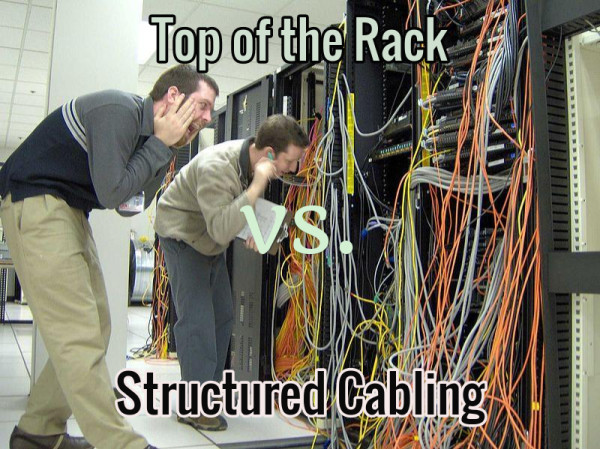Ask most people if they want structured cabling or a top of the rack solution and you might as well be asking them the question in Martian. Even if they have an understanding of what the two terms mean, what’s the difference, really? Here’s what you need to know:
Cooling is Easier with Cable
When you have a top of the rack solution, you find that the top racks get considerably hotter than the bottom racks. This makes cooling a bit more complicated. Failure rate in the third rack up is actually three times that of the bottom rack.

Structured Cabling Means Flexibility
With a top of the rack solution, everything is designed to plug into everything just so. With structured cabling and open frame server racks, you can adjust as needed. You can move servers around, and replace cables without spending a lot of money.
Top of the Rack Does Look a Little Cleaner
A big part of the appeal of top of the rack is the streamlined look. However, with some basic cable management techniques, it’s easy to solve the problem of loose and tangled cables. With some zip-ties and foam pipe insulation, there’s no reason a structured cable solution can’t look just as neat as a top of the rack setup.
Structured Cabling is Cheaper
In most studies, setup and maintenance costs for top of the rack server solutions tend to come out to about twice what you spend for a structured cable setup. This isn’t a marginal difference, this is a solution costing twice as much as the alternative.
This is owed to the replacement costs for overheated servers, the inflexibility of the setup driving repair costs up and so on. When something breaks in a structured cable setup, you only need to replace the part that broke. This is not always the case for top of the rack setups.
Structured Cabling Consumes Less Power
The fact that structured cabling consumes less power than ToR servers is a contributing factor to cooling issues. Structured cabling is a lot less likely to burn up and fail in part because it doesn’t need nearly as much power to run.
Although we’re making a strong case for structured cabling, the reality is that you should evaluate each situation individually and determine whether structured cabling or top of the rack is preferable depending on a number of factors. ToR servers can be more space-friendly when you have to put them into tighter confines as you don’t need all those cables.
It’s also a great solution for server to server traffic, and offers high performance. Structured cabling seems like a no-brainer for its flexibility, cost-effectiveness and low power consumption, but you might find yourself setting up a server system that demands ToR for any number of reasons.
Structured cabling is the go-to choice for many medium to large sized companies as it’s cheaper to set up and cheaper to run with less frequent failures, but it’s a good idea to take the time to look at both options and determine what will work best for your needs.
Katrina is a product specialist, solving issues for your computer server and power needs at Racksolutions.com
